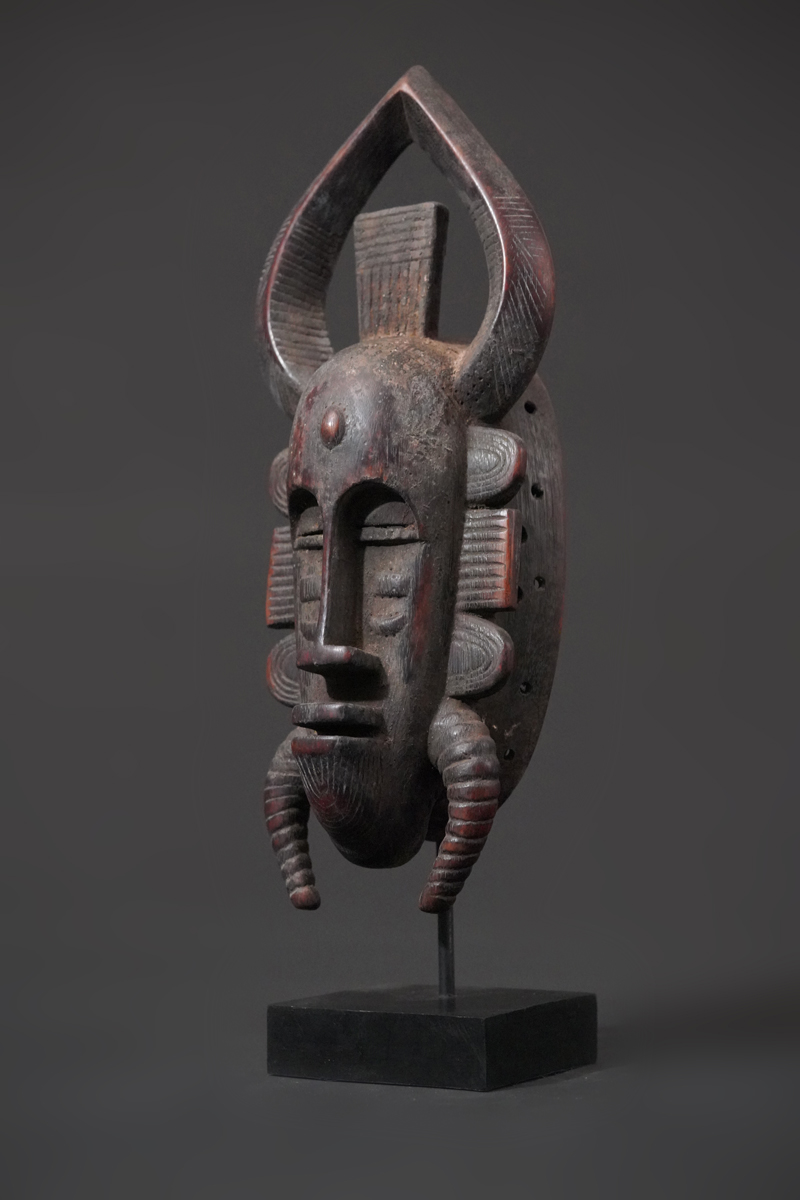 |
 A Senoufo-Kpelié mask, oval elongated face with scarification marks underneath the mouth, the eyes, a bulging forehead underneath two curved horns and a rectangular form in the centre, pierced at the rim for attachment; fine dark patina, traces of use and age with slight encrustations.
Kpelie-masks were worn during funeral sessions by the Poro society. These funeral festivities are marked by masquerades, which symbolically expresses the fundamental dualities in Senufo thought: male/female, body/spirit, life/death. In general this type of mask is symbolizing an ideal woman. The unique features which characterize the Kpelié mask include elongated flanges radiating from the bottom part of the mask, which are a reference to the hornbill bird. The horns on the mask refer to the ram, an important sacrificial animal. The nodules on the forehead represent palm nuts as well as vulvas; they are flanked by cicatrization marks that symbolize the twins born to the primordial couple. The significance of a double face is not known, but double- and single-faced Kpelié masks are used interchangeably.
Lit.: Holas, B., L´Art Sacré Sénoufo, Limoges, 1978, Facing the Mask, Herreman, Frank, Museum for African Art. s. publ.
sold
Height: 69 cm
Weight: 1,5 kg (incl. stand) |
 photo: wolfgang-jaenicke.com, for more information, please write us an e-mail with the identification number of the photo identification no. BBD004581.jpg
photo: wolfgang-jaenicke.com, for more information, please write us an e-mail with the identification number of the photo identification no. BBD004581.jpg |
|
